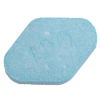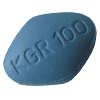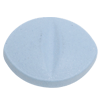
Bestsellers
-
Generic Viagra-10% $0.40 $0.34
-
Generic Cialis-10% $1.19 $1.00
-
Generic Levitra-10% $1.10 $0.94
-
Viagra Professional-10% $1.82 $1.15
-
Viagra Super Active-10% $1.74 $1.35
-
Kamagra-10% $3.61 $1.42
-
Sildalis-10% $2.63 $1.21
-
Silagra-10% $1.67 $1.17
My Canadian Pharmacy is one of the first Canadian international online pharmacies. It was opened in 1992. Our mission from the very beginning was simple: to make medications affordable for all social classes. We have shortened the path of medications from manufacturer to consumer as much as possible. Cooperating directly with manufacturers and distributors, we not only provide medications at low and reasonable prices but also guarantee the authenticity of the products offered.
In addition to low prices, we also constantly work to expand and replenish the range so that the search for drugs becomes easy for you. On the website, you will find a wide range: medications, medical equipment, medical cosmetics, sports nutrition, products for mothers and babies, etc. Our pharmacy allows for sale only that medications approved by the US Food and Drug Administration.
The purpose of this website is informational only, we do not promote or offer self-treatment. Specify the final prices, the manufacturer, the packaging and the number of products directly in our pharmacy using the contact form. Information about products on this site is not final, may not correspond to the information shown in the instruction for use and may be changed without notifying the users of our resource.
Partners
Our company cooperates with reliable manufacturers, insurance companies and medical assistants. We provide customers with high-quality medical products globally. We work only with certified products, official suppliers and manufacturers, and we have all the necessary certificates of quality and registration for the entire range, which is presented in our pharmacy website.
Our qualified staff will provide information on the availability of drugs, help with dosage, tell you whether the package is divided, offer analogs, arrange regular or courier delivery to your office. We have the ability to make orders of various medications. We arrange seminars and advanced classes for our staff to foster further development.
We value our long-term cooperation with partners, based on trust and impeccable reputation.
Multifunctional Internet portal
- Search system: search by the availability of drugs and the most favorable prices through the website.
- Online directories: an online information system for drugs, diseases and symptoms.
- International service: the delivery is conducted all over the world except for some Asian countries.
- Full information about pharmacy: address, phone, hours of operation.
Advantages
- Reliability – My Canadian Pharmacy is a project of one of the leading international pharmaceutical distributor, which has been on the market for more than two decades.
- Quality – all our products are certified and are delivered only by reliable and authoritative suppliers and manufacturing companies.
- Low cost – thanks to direct deliveries from manufacturers, we always have favorable and one of the lowest prices. The price indicated on the website is fixed and cannot be changed. Delivery is international but can be free under several circumstances! Regular promotions and discounts will help save even more.
- A wide range of products – a large selection of various medical products and health-related items. Finding a variety of expensive drugs or their analogs is now much easier.
- Save time – referral service allows you to search for various medications without leaving your home around the clock.
Our values
Ambitiousness: We set high goals for ourselves and reach them with a sense of pride. We look at the world through the prism of endless possibilities and overcome the obstacles to success with satisfaction. No one of Canadian pharmacies can boost such an experience.
Professionalism: Professionalism for us is a fusion of reliability and effectiveness. We are a time-tested company. We keep our promises and appreciate the trust of our partners.
We work openly and honestly, respecting the reputation of our company as reliable. A reliable company is characterized as responsible people you can always rely on and be sure that they will fulfill their obligations. Performance for us is the keyword. We consider all our activities as a process aimed at achieving the goal.
Teamwork: We value in people an indifferent attitude to the common cause, the ability to listen and hear. Each member of the team is its important link, without which success will not be complete. We maintain warm relations within the team, based on family traditions of trust and goodness.
Positive attitude: positive thinking is the foundation on which our attitude towards life, people, and ourselves is built. It has an amazing ability – it changes life for the better and certainly leads to success. We know that for sure!
Why are Canadian medications affordable?
- Direct deliveries from manufacturers – our company has a wholesale pharmaceutical license;
- Low markup – due to the large turnover of our pharmacy, we can sell drugs with a low markup;
- Maximum discounts from distributors – due to the large volume of purchased goods and centralized delivery;
- Cost reduction – our company provides centralized deliveries from our own warehouse. Procurement and management are carried out by the central office.
Site search engine
- The search does not depend on the word order;
- The search takes into account the morphology of the English language;
- The search takes into account possible mistakes;
- The relevance of the search is taken into account, i.e. the search finds the most suitable options and releases them first;
- The search engine takes into account the synonyms of products;
- When entering letters into the search bar, suitable options are suggested, taking into account synonyms and relevance;
- The ability to search for goods by alphabetic tools. When you enter the first letter of the word in the search bar, the goods are displayed with the same value.
Every customer may choose the most suitable way to find this or that product able to improve your physical health. There is also the list of bestsellers which include the most sought-after medications like: Cialis Daily, Viagra Super Active, Brand Cialis, Kamagra Jelly, Brand Viagra, Lasix, Priligy, Cialis Super Active, generic Viagra, Cialis, Levitra, Viagra Professional.
We will give short descriptions. For example:
generic Viagra is a preparation produced to eliminate erectile dysfunction signs. It contains sildenafil related to PDE-5 inhibitors. This medication stimulates blood flow to the genital area. Under sexual stimulation, the blood flow increases stimulating an erection. Sildenafil is the first substance created to improve male erectile function. It is released in the form of blue pills in the dosage of 25, 50 and 100 mg. The recommended daily dosage is 50 mg.
generic Cialis (Tadalafil) is one more medication produced with the same purpose. Men suffering from erectile dysfunction may fee an erection within 36 hours in the case of sexual stimulation. This ED medication is released in the form of tablets. The dosage is 2.5, 5, 10, 20 mg. The prescribed daily dosage is 20 mg which can be adjusted depending on individual characteristics.
generic Levitra contains Vardenafil belonging to the same PDE-5 inhibitor. It is prescribed as a means to get rid of erectile dysfunction which the main symptom is the lack of an erection. It is released in the dosage of 10 and 20 mg. Generic Levitra is acknowledged due to soft side effects. Their rate is considerably lower in comparison with other ED drugs. This drug has a lot of different analogs able to improve erectile function in males.
Lasix is a fast-acting diuretic derived from sulfonamide. The diuretic effect of Lasix is associated with the inhibition of sodium chloride reabsorption in this section of Henle’s loop. Secondary effects in relation to an increase in sodium excretion are an increase in the amount of urine secreted (due to osmotically bound water) and an increase in potassium secretion in the distal part of the renal tubule. At the same time, it increases the excretion of calcium and magnesium ions.
Priligy is created to fight premature ejaculation. In the American market, it appeared long ago. This drug has passed a series of clinical studies and won fame as the most effective means for prolonging sexual intercourse. Previously, it could only be purchased in European countries, waiting for mail order for a long time, but now, thanks to our website, there is an opportunity to buy dapoxetine from Canadain distributors as well. Priligy is an innovative item bringing satisfaction to every man in the world suffering from PE.
Corporate ethics
The company operates in accordance with the current federal and nationwide legislation, as well as internal regulatory and administrative documents. We value the trust of our partners and our business reputation. So, the main priority of the company is the legality and openness of its business processes. In its activities, each employee of the company strictly adheres to the ethical principles specified in the Corporate Code.
Warranties and guarantees
We guarantee 100% authenticity and quality of all medications and medical supplies. In our assortment, only products are sold that have a quality certificate from the manufacturers and are registered according to Canadian legislation.
Only highly qualified pharmacists work for us.
We cooperate exclusively with representatives of the world’s leading manufacturers and the largest wholesale operators of the international pharmaceutical market, working according to FDA, GMP, GPP and GDP standards.
When requested, it is enough to report the name of the drug. If you want to receive a certificate for an already purchased drug, specify the number and date of the receipt to determine the drug series. According to the legislation, a quality certificate will be provided within two days to the specified email address.
We are an informative service
There are full annotations and comprehensive instructions on the use of more than 300 of topical drugs. All documents can not only be read but also printed. You can find out everything about the preparation, even before its purchase.
There are more than 300 medical products in our assortment, which will allow you to purchase even the rarest products using our website. Our pharmacy – the best assistant in the care of your health!









